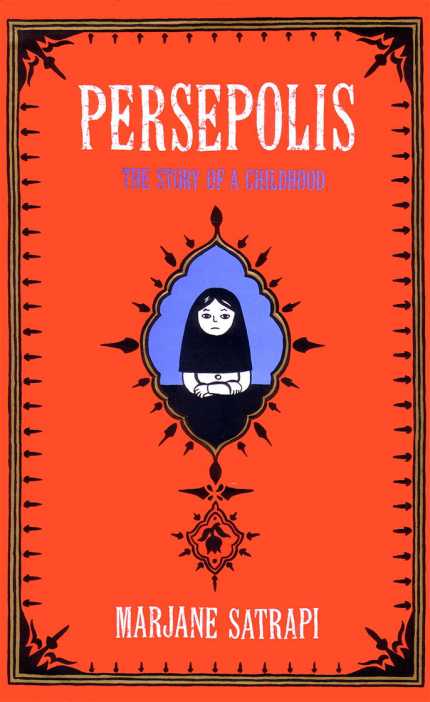Persepolis: The Story of an Iranian Childhood, by Marjane Satrapi

Persepolis: The Story of an Iranian Childhood by Marjane Satrapi
My rating: 4 of 5 stars
Marjane Satrapi’s Persepolis is a powerful and moving graphic novel that tells the story of the author growing up in Iran. I was pleasantly surprised the graphic novel form succeeded at telling complex and nuanced stories in a highly accessible way.
For readers like myself with limited prior knowledge of Iran, the book provides a valuable and accessible window into the complexities of life during this historical period in a country that I for one only associate with the “Axis of Evil” and the brutal oppression of any kind of opposition to the regime.
One of the strengths of Persepolis is the way that it makes the experience of living through the revolution and the war tangible. It presented me with a sense of the everyday challenges and fears that people faced, as well as the more profound philosophical questions about identity and beliefs. The book feels so real, so true to life, that an important part of history becomes approachable and more understandable.
The story of Persepolis is told through the eyes of Marjane herself, and it follows her journey from childhood to her initial departure from Iran at the age of 14. She experiences the upheaval of the “Islamic Revolution” and the Iran-Iraq War. Throughout the book, Marjane grapples with the complexities of life in post-revolutionary Iran, including the restrictions placed on women, the political repression and violence that she witnesses, and the challenges of navigating her own identity and beliefs.
However, it is also important to note that Persepolis is written from the point of view of a privileged girl. Satrapi comes from a well-educated and politically active family, and her experiences growing up during the revolution are heavily influenced by her family’s status. While this does not diminish the power of the story she tells, it is worth considering the ways in which her perspective may be different from that of others who lived through revolution and war.
On the other hand, it is doubtful a less privileged voice would have had both the opportunity and means to tell this story in such a powerful way. It seems much more likely for this story to never have been told had it been experienced by someone else.
Satrapi’s art style is simple, yet effective, and the black-and-white images complement the story perfectly. The use of the graphic novel format allows her to convey information and emotions in a way that would be difficult to achieve through text alone. For example, the scenes of political repression and violence are particularly powerful, and the images of Marjane’s family members being arrested and executed are both haunting and moving.
Despite the serious subject matter, Persepolis is also filled with moments of humour and satire, which help to lighten the mood and provide a respite from the often-heavy subject matter.
A very interesting graphic novel that garners four stars out of five. The second instalment is already waiting to be read.
Ceterum censeo Putin esse delendam
View all my reviews